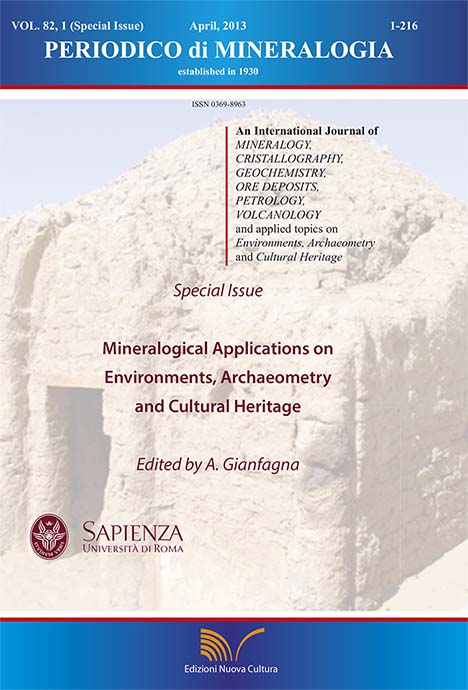Soil–water interactions in soils of the Padanian Plain (Ferrara, Northern Italy): insights on heavy-metal mobility and phytoavailability
DOI:
https://doi.org/10.2451/2013PM0010Keywords:
Soils, Po River Plain, heavy metals, element-specific transport parameters, soil-to-plant uptake, water contaminationAbstract
The soils of the Po River plain, developed on the alluvial sediments, are often characterized by high concentration of heavy metals, in particular chromium and nickel. These geochemical anomalies are “geogenic”, i.e. related to the specific nature of the “mother rocks” outcropping in the basin that typically include mafic and ultramafic lithologies. The elevated heavy metal backgrounds of soils potentially represent an effective geochemical risk considering the toxicity of these elements. In order to delineate soil quality thresholds and to provide guidelines for human activities (e.g. agriculture) the current legislation takes into consideration the “pseudototal” metal content obtained with aqua regia extraction tests. However, only a fraction of this chemical budget is available for plant and human uptake. Soil leaching tests with deionized water plausibly provide a better analogue to simulate the natural soil-water interactions, in order to predict the behavior of metals in the environment. In particular, in this paper we investigate with water leaching tests soils sampled in the surrounding of Ferrara (eastern part of the Po plain) that were previously characterized by bulk XRF analyses and aqua regia extractions. The approach gives insights on the element-specific transport parameters, giving clues for a) the possible contamination of the natural water and b) the soil-to-plant uptake processes and phytoavailability. Results, expressed as solid-water partition coefficients, highlight that nickel is significantly more mobile and bioaccessible than chromium and should be monitored in the local agricultural products to avoid its possible transfer and bioaccumulation in the food chain.


